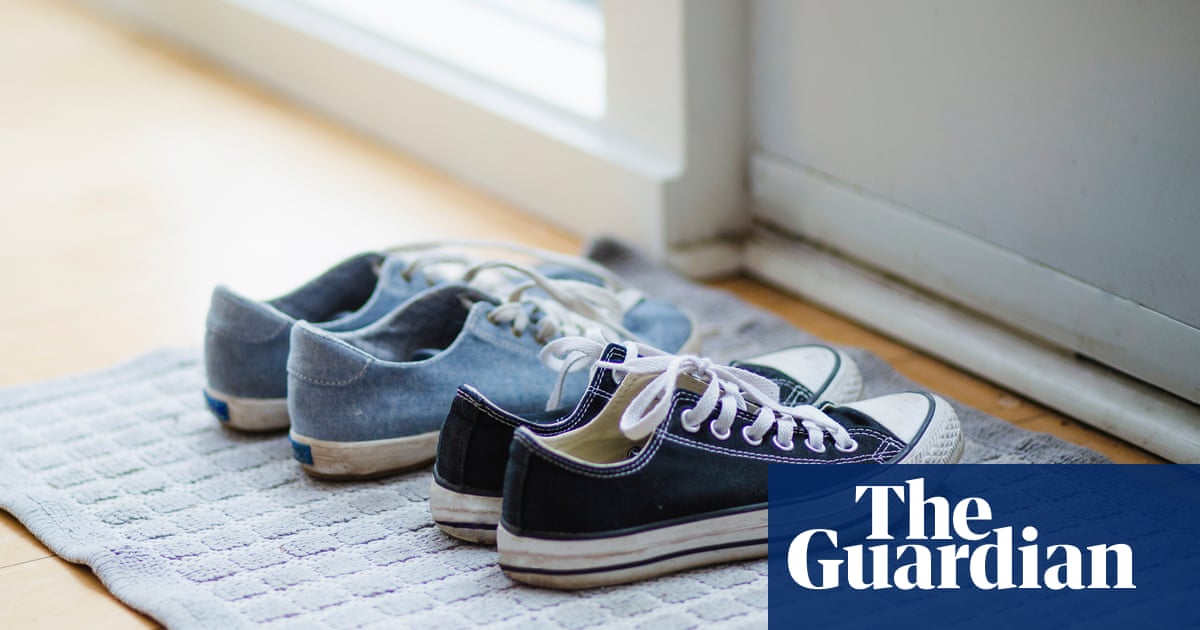“Shoes off!” barked my slightly bossy friend Kit as I was about to cross her threshold. I was taken aback: was this a new habit adopted from social media or some lifestyle guru?
Kit is not obsessive, but she is house proud. She lives in the country, her house surrounded by muddy lawn near a beach, so it makes sense not to drag dirt on to her beautifully polished parquetry or scratch it with sand. She goes about barefoot year-round: slippers are not her style. She keeps a pair of rubber slides at the back door for putting the bins out, or going to the veggie patch.
I had no choice but to comply, relieved that I had on good clean socks and that Kit’s house is well heated. I felt a bit awkward at first, slipping and sliding like a shaky beginner skater on an ice rink. But by the end of the evening, I was persuaded that we too should adopt this more hygienic approach, despite misgivings about dropping boiling water or cooking fat on my feet.
Sign up for our rundown of must-reads, pop culture and tips for the weekend, every Saturday morning
Manynon-Anglo-Celtic households, of course, have a long-held tradition of removing one’s shoes at the door. In Japan, indoor house shoes calleduwabakiare usually provided to keep tatami floors, where you sit, sleep and eat, pristine. It is actually illegal to wear outdoor shoes in rental properties and can incur a fine. In Scandinavia, felt and wool indoor slippers are stylish accessories. In Canada,where the severe cold requires heavy footwear such as snow boots, houses usually have a wet room in which to remove all waterproof gear and leave it out of the way.
Abit of readinginformed me that shoes carry in germs, bacteria, pesticides and a variety of other nasties such as carcinogenic asphalt sealants that are invisible but can linger in domestic dust. As just two adults at home, we weren’t worried about small children crawling at ground level, nor do we have a pet, but this relatively minor adjustment sounded healthy and sensible.
The decision proved to besurprisingly divisive and complicated. When I raised it with friends, some said they disliked being asked and avoided houses where it is required.
Even small changes demand thought. Unforeseen decisions suddenly have to be made: how best to suggest this new approach? On the phone, when inviting people round? Or at the door? And then: where to take off the shoes? Outside, where spiders and other critters might make their home in them? Inside, where they will look messy? (Should we get a box to contain them? Or a rack?)
Enthusiastically embracing our decision, we buy stylish slip-ons so as to avoid the kind of tartan woollen footwear our grandparents wore (one friend with a shoeless home told me his partner said he’d leave him if he ever adopted slippers); we try to remember not to step outside in them on any account, not even to go to the bins or pick a herb; we keep separate shoes for outside by the back door. The key is not to have to bend down or lace them up. It takes a few weeks to adapt, with a few stumbles evidenced by muddy sole tread marks on the stairs.
Sign up toSaved for Later
Catch up on the fun stuff with Guardian Australia's culture and lifestyle rundown of pop culture, trends and tips
after newsletter promotion
In the city where the risk is more likely to be dog shit, the shoes-off trend has spread for other reasons. Friends in inner-city apartments in older buildings tell me that it is common for bodies corporate to ask residents to remove their shoes out of consideration to those living below them, so that they don’t have to endure the clip-clop of heels on boards as it seems no one has carpet any more.
We are still in the beginning of our new shoeless lives, but already there is no turning back.In hindsight, we probably should have eased into this gradually over summer, instead of starting now, when everyone is getting back into boots. As with all change, it’s one step at a time.
